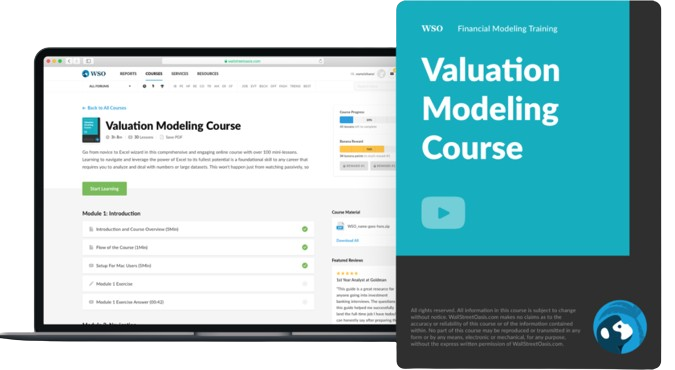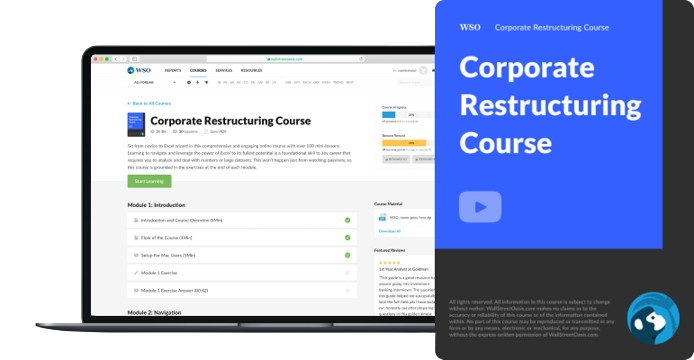Unlevered Cost of Capital
Theoretical rate of return on a company's assets, assuming no debt
What Is The Unlevered Cost of Capital?
The Unlevered Cost of Capital is a theoretical rate of return on a company's assets, assuming that the company has no debt (leverage). In other words, it represents the cost of financing a project or investment using only equity without borrowed funds.
It is a rate the company would earn if they were to invest in a capital project without using any leverage. Investments and capital projects with this rate have lower costs than activities and projects with a levered cost of capital.
Potential investors use the unlevered cost to assess the attractiveness of a project or investment opportunity and estimate the equity returns from acquiring a stake in the business.
Investors may lose interest in investing in a project or company with poor unlevered returns and may choose not to engage.
Leveraged cost projects and investments have higher costs than unlevered cost projects and investments, which are presumed debt-free due to the debt issue. Therefore, a business's cost to finance a project without incurring debt is known as the unlevered cost.
As a result, Investors may choose not to invest in a company if it cannot generate the expected returns.
If all other conditions remain unchanged, an investor may view a company as high risk if it has a higher unlevered cost of capital. This is true even if the investor assumes all other things to be the same.
Key Takeaways
- The Unlevered Cost of Capital is the theoretical rate of return on a company's assets, assuming no debt. It represents the cost of financing a project or investment using only equity.
- Potential investors use the unlevered cost to assess project or investment attractiveness. Poor unlevered returns may lead to a loss of investor interest, impacting a company's ability to attract funds.
- The Unlevered Cost of Capital is a key component in the Weighted Average Cost of Capital (WACC) calculation, essential for discounting cash flows in the valuation process.
- The Unlevered Cost of Capital does not explicitly consider the risk involved in leveraged investments and lacks a time value of money component. Investors and businesses should be cautious and aware of these limitations when using this metric for decision-making.
Formula of Unlevered Cost of Capital
Three elements are crucial when determining the unlevered cost of capital: risk-free rate of return, unlevered beta, and market risk premium.
The risk-free rate is typically the yield on a US 10-year treasury bond, and they are called risk-free rates because there is virtually no chance of the US government defaulting.
It measures an investment's volatility with the market or other businesses. The market risk premium is determined by subtraction from the risk-free rate of return of the anticipated market returns.
The formula is:
Unlevered Cost of Capital = Risk-Free Rate + (Unlevered beta * Market Risk Premium)
Plug in the values to solve the formula, and as a first step, you have to finish the formula's multiplication step before adding the result to the risk-free rate value. Therefore, it's critical to understand each component of the unlevered cost of capital calculation to use it properly.
Where
- Risk-Free Rate: The lowest rate of return a business may get without taking any financial risks is known as the "Risk-Free Rate" of return. It is an illustration of the interest that an investor would earn on a risk-free investment.
- Unlevered Beta: Also known as asset beta, this component quantifies a company's market risk without the influence of debt. It is calculated by removing the financial leverage impact from the levered beta.
- Expected market returns: These are the returns a company expects from its stock holdings and are a component of the capital asset pricing model (CAPM).
- Market Risk Premium: The market risk premium is the excess return investors expect to receive to invest in a business or stock over the risk-free rate.
Unlevered Cost of Capital Example
Let's compute the cost using an example to grasp the idea further. Sydney Ltd. is interested in learning the shop's unlevered cost. To do so, she engages an investment banker, who reviews the business's financial records to ascertain components of the formula, i.e., market risk premium, unlevered beta, and the risk-free rate.
The screening options for investment bankers are shown below:
| Risk-Free Rate | Unlevered Beta | Market Risk Premium |
|---|---|---|
| 0.50 | 0.70 | 0.12 |
With the above information, you can calculate the unlevered cost of capital. You can start by computing the multiplication part of the formula:
Unlevered Cost of Capital = 0.50 + (0.7 * 0.12) = 0.50 + 0.08 = 0.58
This formula postulates that a company will have a higher unlevered cost of capital if investors see the stock carrying a higher risk level.
However, depending on the state of the external market, the precise size may change. Calculating the unlevered cost of capital assumes that the business does not commit, regardless of whether it has one.
An investor downturn or rejection of investments may occur for a company with poor unlevered returns. However, projects with non-leveraged costs are presumed to be debt-free. On the other hand, leveraged cost projects and acquisitions create more significant expenses due to issuing debt.
The unlevered cost of the enterprise is the price of minimally financing an undertaking without accumulating any commitment. Therefore, even if the firm has a duty, it is essential to ignore the obligation component and its cost when calculating the unlevered cost of capital.
It might not be a sensible investment if the estimate yields an unleveraged capital cost of 10% and the company's return falls below that mark. The real returns may be estimated by evaluating the results against the organization's present cost of debt.
For example, if a company's cost of debt is 7%, and the unlevered cost of capital is 16%, its Weighted Average Cost of Capital (WACC) will be lower than 16%.
This unlevered cost is still instructive, but investor money may transfer to alternative investments if the company cannot deliver the 10% unlevered returns expected by investors in this market.
Unlevered cost of capital when there is debt
Even if the company had debt, removing the impact of debt from the total would be necessary to determine the unlevered component. The non-leveraged WACC is considered an ideal scenario with no debt, and in this case, the weight of debt is zero, eliminating the impact of taxes on the cost of debt.
The Capital Asset Pricing Model (CAPM ) can be used to calculate the non-leveraged WACC or Cost of Equity.
The only issue is that leverage affects beta; when a company has debt, beta becomes leveraged. Therefore, we must unlever the beta to calculate non-leveraged WACC.
This unlevered cost is still valuable, but if the company cannot meet market expectations of annual unlevered returns, investor funds may be transferred to other opportunities due to a perceived increase in risk. Consequently, the price of the company's shares may decrease.
Unlevered Cost of Capital Importance
In the valuation process, the role of WACC is crucial as it is required to discount the cash flows, and the unlevered cost of capital forms a part of the WACC calculation.
When determining how much to value a share on the stock market, the cost of equity is crucial. Like all other investment classes, equity expects to pay its investors a return. The issue is, unlike debt and other classes, the cost of equity is never genuinely clear-cut.
The cost of debt for your business can be quickly determined by the interest rates you pay. In contrast, the cost of equity is often estimated, as equity holders take what's left over from the earnings, called the residual value.
However, the cost of equity is necessary for valuation purposes. Thus, excluding the cost of equity in the discount rate calculation would likely result in underestimating the required return and could lead to the undervaluation of investments.
The WACC is the average return on investments a business needs to achieve to appease its creditors and stockholders. Each component's weight has been assigned per the proportionate importance of each group.
A greater weight will be given to the equity component in the calculation, for instance, if equity investors are more significant than debt holders.
The WACC is employed to determine whether a firm's investment initiatives yield sufficient returns.
- If a project's return is less than the WACC, it should be rejected, as this would imply the project is not meeting the minimum required rate of return
- If the project's return exceeds the WACC, it should be approved, as it signifies a return higher than the company's cost of capital
Advantages and Disadvantages of Unlevered Cost of Capital
Using any cost of capital or discount rates has its advantages and disadvantages. The following points shed light on them:
Advantages are:
- The primary benefit is it gives a precise picture of an investment's prospective profitability. Businesses can compare returns on various investments more fairly by removing the impact of leverage.
- It can help assess projects with various risk levels. It can assist firms in identifying these initiatives because riskier investments typically demand a higher return.
- It will help an organization find an optimum capital structure. Asset beta or unlevered beta is required as part of the calculation of the unlevered cost of capital, which usually involves non-leveraged public companies' levered beta and then re-levering back to the optimal capital structure.
Disadvantages are:
- It's assumed that companies can source capital at a risk-free rate, but in practice, this is frequently untrue, and companies may need help to raise the money they require for their investment.
- Furthermore, since it does not account for the time value of money, it could overestimate the actual cost of an investment. It is not a valuable instrument for corporations evaluating new investments.
- It is a hypothetical evaluation to determine the rate of return without considering the impact of leverage. Realistically, most companies use leverage, and relying solely on the unlevered cost of capital may not reflect the true riskiness of the investment.
Mistakes when using Unlevered Cost of Capital
One of the most frequent errors when employing unlevered cost of capital is failing to account for the particular financing mix of the organization. This error may cause one to overestimate or underestimate the actual Cost of Capital, which may result in poor decision-making.
Making use of an incorrect discount rate is another frequent mistake. This can occur when businesses choose a discount rate that is either too high or too low, which may result from various factors, including neglecting the time value of money.
Finally, some businesses mistakenly assume that the unlevered cost of capital is constant. In truth, it may alter over time depending on the state of the economy, the company's finances, and other variables.
Therefore, it's crucial to frequently evaluate and revise predictions of the unlevered cost of capital. Businesses can more precisely determine the actual cost of capital and make better investments and other strategic decisions by avoiding these mistakes.
Also, using the levered beta instead of non-leveraged could be a mistake many analysts make. However, to calculate the unlevered cost of capital, unlevered beta is necessary and can be easily computed. It depends on the context and the specific requirements of the analysis.
First, you need a list of comparable companies that fit the company you'd like to evaluate and ascertain their levered betas.
Second, levered beta needs to be unlevered by using the following formula:
Levered Beta / 1+ ((1 - T) * (D/ E))
Effectively, this will remove the impact of financing or capital structure and provide you with the asset beta of companies, which can be easily compared to other companies and used in the formula.
Avoiding Mistakes when Employing Unlevered Cost of Capital
It is a popular method businesses use to calculate the rate of return on investments. However, there are a few possible hazards with the use of unlevered cost of capital. One issue is that the risk involved with leveraged investment vehicles is not explicitly considered.
The omission of leverage while calculating the cost of capital could be a disaster as it would throw off the valuations of the businesses. Factoring leverage would enable investors to calculate the actual cost of capital that represents the business.
This can cause you to overestimate the possible ROI.
Additionally, because the unlevered cost of capital does not consider the time value of money, it could contribute to overestimating the actual cost of capital. Other factors may also play a role in this overestimation.
Therefore, investors should be cautious when using the unlevered cost of capital to evaluate an opportunity or make investment decisions, and enterprises should be mindful of these limitations. It is a valuable tool when used appropriately and with a clear understanding of its limitations.
Businesses can steer clear of costly errors by considering these variables.
Researched & Authored by Frank Pereira | LinkedIn
Free Resources
To continue learning and advancing your career, check out these additional helpful WSO resources:





or Want to Sign up with your social account?